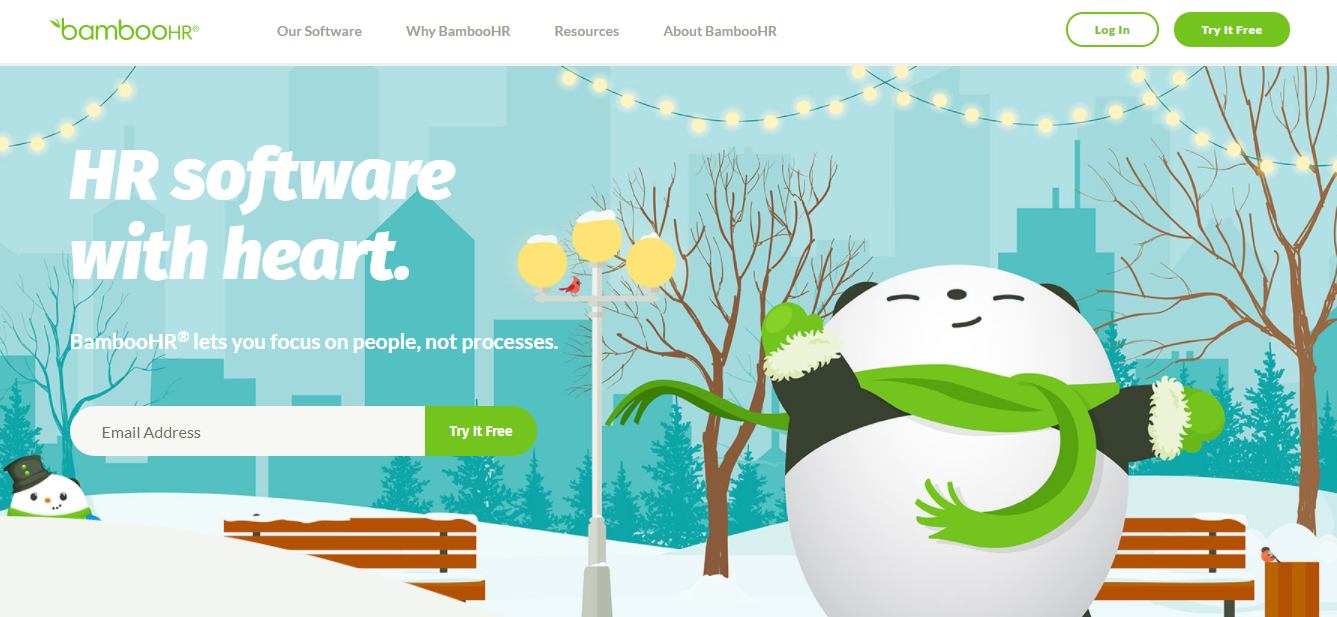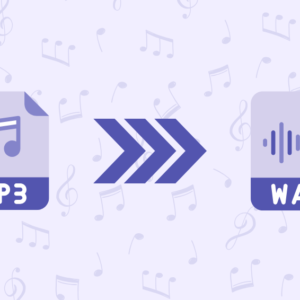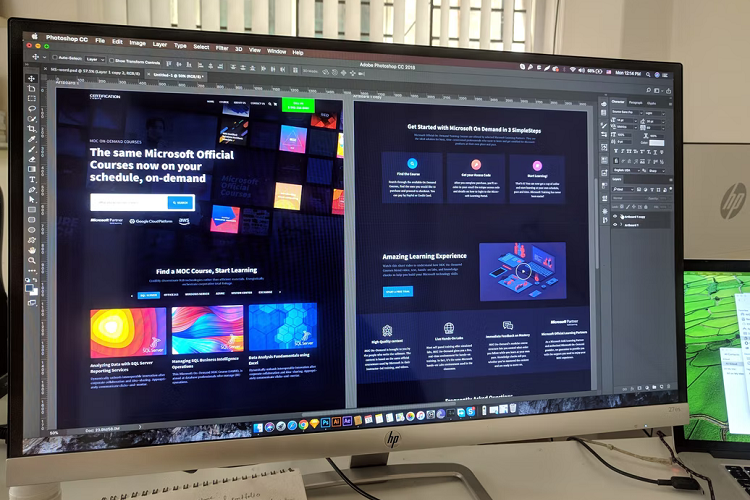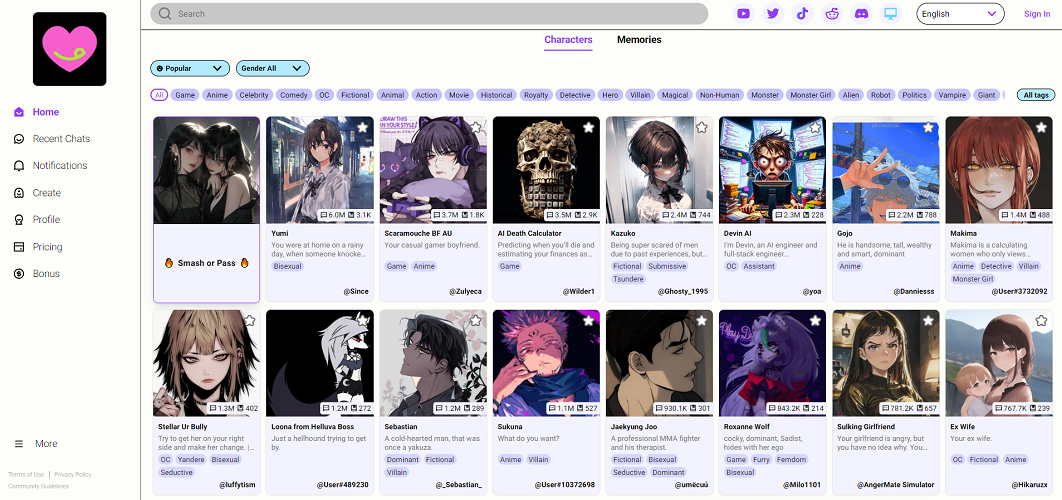An organization’s ability to successfully recruit new hires stands as its most essential function because it shapes both workplace efficiency and corporate outcomes. Organizations need to identify the perfect candidate but their selection process usually begins with insignificant piles of job applications. Recruiters face the challenges of sorting through various thousands of job applications representing a lengthy and difficult examination process. Fortunately, advancements in technology have brought powerful tools to ease this burden: resume screening software.
This article examines the leading resume screening software for recruiters which increases both their efficiency and screening accuracy. Finally, we will guide users through selecting their best organizational software from available options while discussing features along with benefits and challenges.
What is Resume Screening Software?
Resume screening software represents a technology that functions as applicant tracking systems (ATS) to assist employers in their preliminary resume evaluation steps. Employers and hire teams use this software to process the many job applications they obtain for open positions.
Resume screening software analyzes prescribed elements through algorithmic methods to understand submitted candidate profiles then eliminate applicants who lack accepted qualification standards. The software examines resumes to discover keywords and technical abilities and qualifications before it finds candidates who match given jobs.
Key Features of Resume Screening Software
- Resume Parsing: The software collection tool retrieves skills and educational background with work experience data from candidate resumes.
- Keyword Matching: ATS uses pre-defined keywords and phrases to recognize resumes which fit particular job openings.
- Filtering and Sorting: Employers get the ability to reduce their candidate pool through specific requirements such as area preferences together with educational attainments along with work experience.
- Integration with ATS: Applicant Tracking Systems (ATS) can blend with most recruitment tools to deliver complete recruitment management services.
The purpose of using resume screening software enables recruiters to manage hiring workflows more efficiently while maximizing candidate qualification discoveries and saving team member work hours. Resume screening technology serves as a valuable instrument although it lacks complete precision since it might overlook qualified applicants whose applications don’t match software specifications.
Despite these software limitations job candidates need to customize their resumes according to employer-defined requirements to secure positions.
12 Best Resume Screening Software
Recruiters increased their search for sophisticated resume screening software strongly since the technology has become essential for their hiring practices. This blog evaluates leading recruiter screening software after discussing their features along with distinct advantages.
1. ClearCompany
This resume screening software offers an intuitive resume screening solution designed to streamline the hiring process. It is software that leverages AI algorithms to assess resumes based on keywords, experience, and qualifications. This software also provides real-time collaboration features, enabling recruiters to share feedback and evaluate candidates collectively.
The synthetic intelligence feature of this resume screening solution brings an easily usable solution to minimize recruitment problems. An AI algorithms in this software application evaluate resumes through keyword matches and skill examination while reviewing candidate experience. Through collaborative functionality recruiters can share evaluations while collectively reviewing candidate documents in real time.
2. SmartRecruiters
The cloud-based ATS provided by SmartRecruiters features built-in resume screening capabilities. Anyone can make individualized screening questionnaires through this system and artificial intelligence processes resume to establish candidate rankings. Through this solution recruiters gain access to collaborative tools for instance interview scheduling capabilities alongside support for seamless system integration among various HR applications.
The system functions as a complete recruitment tool while featuring a resume analysis function as part of its system. Through AI-enhanced tools this system evaluates resumes to locate critical keywords for scenario-based candidate selection and application matching. Recruiters enjoy SmartRecruiters’ easy-to-use interface which allows optimized resume comparison together with ranking functions and shortlist capabilities.
3. Greenhouse
Greenhouse functions as one of many popular applicant tracking systems (ATS) for performing resume screening operations. Through this tool you can establish certain standards that determine which resumes get selected according to education along with experience and skill requirements. The user interface at Greenhouse comes with strong teamwork functionality and supports integration with existing HR solutions.
Modern hiring systems which include advanced resume screening capabilities are known as greenhouses. Artificial Intelligence algorithms from the system evaluate resumes to detect important keywords together with applicable abilities and work history. Recruiters can design their own automated scoring systems to evaluate candidates across a standardized framework while undergoing collaborative screening activities with screening partners.
4. Superworks
The Applicant Tracking System (ATS) known as Superworks operates from start to finish and includes programmed resume screening capabilities. Through AI algorithms this software examines eligible job candidates while collecting vital resume data to recognize suitable applicants.
Superworks delivers its best benefit to recruiters through Super Recruit that simplifies candidate assessments by offering shared feedback functions along with built-in candidate selection features and connection management capabilities.
ATS Resume Checker Tool assists users with resume evaluation when they need assistance with the candidate comparison process. The recruiting process benefits through customizable filters and keyword searches and semantic analysis features which help recruiters identify ideal candidates perfectly.
5. Workable
The recruiting software solution Workable provides complete recruiting capabilities which include built-in resume screening functionalities. The system employs AI algorithms which automatize resume assessments while performing qualification analysis for jobs plus candidate ranking according to selection appropriateness. Workable enables users to design screening questions while connecting to multiple platforms and employment boards.
6. JazzHR
The ATS system JazzHR helps organizations by enabling resume screening to improve their hiring efficiency. The system performs evaluation by comparing candidate resumes against keywords while asking customizable screening questions that help discover suitable candidates. In addition to scheduling interviews and providing collaboration tools and creating reports the software features offer.
7. Talentsoft
Talentsoft delivers complete talent management solutions through its platform with exceptional resume screening functionality. The platform’s intelligent parser tool separates required resume information which includes contact data alongside work records and academic background. The system enables recruiters to implement automatic filtering procedures which rates resume according to predefined specifications so they can sort through only suitable applicants.
8. BambooHR
The resume-screening tool exists within the complete software package of BambooHR. The automatic parsing of candidate data through its AI-trained system fills candidate profiles while streamlining the screening tasks for recruiters.
9. Bullhorn
Bullhorn operates through a cloud-computing platform which includes capabilities for automated resume parsing and candidate screening. Through intelligent parsing technology BambooHR extracts data from candidate resumes which automatically puts it into appropriate fields thus eliminating manual data input. Bullhorn uses AI algorithms which help recruiters identify their most qualified candidates while supporting data-driven recruitment choices.
10. Jobvite
The recruitment software from Jobvite features complete coverage to screening resumes effectively. SmartMatch technology evaluates resumes through analysis to generate rankings which show how candidates match their professions. Recruiters experience streamlined candidate review processes through an interface that also supports team collaboration making job recruitment activities more efficient.
11. ResumeBot
Through artificial intelligence (AI) and natural language processing (NLP) ResumeBot evaluates resumes to find the most suitable candidates. The software utilizes advanced parametros which scan candidate resumes to identify important skills together with experience and qualifications. The system enables users to set their own specific screening requirements while connecting to a frequently used applicant tracking system.
12. CATS
The recruitment platform CATS (Candidate Applicant Tracking System) offers friendly user interfaces combined with built-in resume screening capabilities. The database’s robust search system together with its filtering capacity lets recruiters find appropriate candidates expediently. Through its comprehensive integrations CATS connects users with well-known job boards to enable straightforward hiring processes and background check services.
Why is Resume Screening Software Essential for Recruiters?
The modern recruitment environment requires effective solutions because it presents both large application pools and reduced time frames during candidate screening. These problems find resolution through software systems that streamline repetitive work and deliver valuable insights for candidate recruitment.
- Time and Resource Savings: Reviewing resumes by hand takes too much time while human error often occurs during the process. Resume screening software allows recruiters to evaluate many applications rapidly which creates time and space for them to dedicate to meaningful interactions with potential candidates and their interviews.
- Improved Candidate Matching: The integration of AI and ML powers these tools to conduct comprehensive resume evaluations which delivers shortlists with fully qualified candidates. Interfaces enable recruiters to make more successful hiring choices while lowering employee turnover.
- Bias Reduction: Training models identify human biases which recruiters unintentionally reveal while screening job candidates. The resume screening software functions without human error because it maintains strict focus on candidate skills and work experience.
- Enhanced Candidate Experience: Job seekers value prompt communication. Premade tools deliver instant candidate feedback which subtracts stress from job seekers and enhances organizational reputation.
Key Features to Look for in Resume Screening Software
When evaluating resume screening software, it’s important to consider the following features to maximize its effectiveness:
- AI and ML Capabilities: Such systems provide valuable context analysis for resume comprehension along with the ability to detect implicit transferable abilities from applicants.
- Customizable Filters: Every job is unique. Search for systems which enable users to create filters that match the unique industrial needs of their organizations.
- Integration with Existing Tools: The software must operate without glitches between your ATS and HRIS (Human Resource Information System) together with any other recruitment systems used by your organization.
- Data Security: Choosing tools with high candidate data security standards becomes mandatory when data breaches increase making GDPR or CCPA regulation compliance necessary.
Pros and Cons of Resume Screening Tools
These tools review and eliminate resumes through set screening procedures that recognize important data fields including skills-specific words and work-derived attributes. Here are some pros and cons of using resume screening software:
Pros
- Efficiency: Resume Screening Tools process high numbers of resumes in minimal time that enables employers to save many hours they would otherwise spend on manual resume assessment. These tools provide fast resume scan capabilities alongside filtration features which optimize recruitment steps.
- Standardization: Standard resumes get analyzed by Applicant Software through predefined assessment criteria and protocols which create uniform evaluation practices. Online applicant tracking systems produce an unbiased and equitable assessment to prevent human discrimination throughout the screening process.
- Keyword-based Screening: Application screening programs analyze resumes through their capacity to detect particular words which directly match with job specifications. By enabling employers to find job candidates whose qualifications match job requirements they become more effective at finding compatible candidates.
- Organization: Through ATS Software employers gain access to an organization system which maintains easy search capabilities for candidate details. Efficient candidate management becomes feasible due to ATS’ capability to organize application materials including candidate resumes along with their cover letters through a standardized system.
Cons
- Limited Context: The technical evaluation of resumes depends primarily on keyword systems which operate with automated programming. These systems fail to recognize the complete picture because they do not evaluate work quality or soft skills or accomplishments. The screening system sometimes fails to identify qualified prospects while allowing under-qualified candidates to continue into selection steps.
- Potential for Bias: Resume screening programs that automate candidacy assessments seek to eliminate discriminatory patterns yet tend to produce more bias. Biases typically emerge from the selection methods used in keywords and algorithms and from how software interprets recorded information. When keywords consistently align with specific demographics this leads to disadvantageous outcomes for other candidate profiles.
- Missed Formatting: Management applications struggle to convert certain formats and templates from candidate resumes to structured information. Several versions of resume screening tools can struggle to interpret complex design resumes that contain visual elements and unconventional layouts thus missing critical details.
- Lack of Personalization: These resume screening systems provide restricted customization features alongside algorithms which sometimes fail to match individual job positions or company requirements perfectly. Unnecessary candidate elimination occurs when screening tools filter out potential applicants who do not require elimination nor do candidates who pass screening meet requirements.
How to Choose the Right Resume Screening Software
Finding suitable software means managing numerous choices to select from which proves challenging. Create the following steps to choose the optimum solution for your firm.
1. Assess Your Recruitment Needs
Organizations must know their distinct recruiting obstacles alongside their specific demands before they begin assessing available options.
Key Questions to Ask:
- How many resumes do you typically receive per job post?
- What specific features are you looking for (e.g., AI-based parsing, keyword filtering, diversity-focused screening)?
- Do you need software that integrates with your existing tools, like an Applicant Tracking System (ATS)?
Knowledge of your organization’s needs helps select tools which operate within your hiring process.
2. Define Your Budget
Assessing resume applications with programs can start with a limited free system for lower-scale businesses and move toward elaborate high-end versions for corporate organizations. You need a specific budget to prevent unnecessary expenses but keep all necessary features.
Considerations for Budget Planning:
- Upfront costs vs. subscription-based pricing.
- Scalability: Can the software grow with your company?
- Hidden fees, such as charges for integrations or additional users.
3. Evaluating Features
Choose resume screening software that contains features which are due to your requirements but avoid complexity beyond your needs.
Must-Have Features:
- Resume Parsing: Automatically extracts candidate information like education, skills, and experience.
- Keyword Matching: Identifies resumes that meet specific job requirements.
- Customizable Filters: Allows you to screen candidates based on tailored criteria.
- AI and Machine Learning: Provides insights on candidate suitability beyond basic keyword matching.
- Integration with ATS: Ensures seamless workflow and better data management.
Nice-to-Have Features:
- Diversity and inclusion tools to reduce hiring bias.
- Analytics and reporting for data-driven decision-making.
- Multi-language support for global recruitment.
4. Prioritize Data Security and Compliance
Essential care for sensitive candidate data presents organizations with substantial weight of responsibility. The software selection must fulfill your obligation to obey local and international privacy standards including GDPR and CCPA.
Key Security Features:
- Data encryption during storage and transmission.
- Role-based access controls to prevent unauthorized access.
- Regular updates and patches to address vulnerabilities.
5. Take Advantage of Free Trials and Demos
Free demo versions and testing opportunities accompany most candidate screening tools until you decide to subscribe permanently. You must leverage this moment to witness how the software functions at analyzing its performance in actual business situations.
What to Test During a Trial:
- Ease of importing and screening resumes.
- Accuracy of resume parsing and keyword matching.
- Compatibility with your existing tools and systems.
- Overall user experience and responsiveness of customer support.
6. Read Reviews and Case Studies
Your understanding of different software through evaluations of what other recruiters experienced will yield important feedback about both benefits and drawbacks. Online reviews along with customer testimonials combined with case examples will give you valuable insights into software performance.
Where to Find Reviews:
- Trusted review platforms like G2 or Capterra.
- Social media groups or forums for HR professionals.
- Vendor websites for client success stories.
7. Consider Vendor Support and Customer Service
Intensive support accessibility stands as an essential requirement because it plays a crucial role in the software deployment stage. Look for vendor support which matches your organization’s requirements.
Support Features to Check:
- Availability: Is support offered 24/7 or only during business hours?
- Channels: Do they provide support via email, phone, or live chat?
- Resources: Are there tutorials, FAQs, or user guides available?
Conclusion
The competitive nature of hiring has made resume screening software essential for recruiters who want to reduce their hiring complexity. This blog post examines a selection of leading resume screening software tools which provide recruiters powerful features to effectively process and screen candidate applications.
Recruiting platforms powered by AI and intelligent parsing technologies provide recruiters with the capability to review qualified candidates while making decisions backed by data.
These modern tools enhance recruiter abilities to find top candidates through their advanced features which decrease processing time for hiring. Recruiters must actively follow changes in resume screening software technology because it will help them choose the most suitable solutions that match their hiring requirements.
FAQs
What is the difference between ATS and resume screening software?
ATS functions to supervise employment process management while resume screening software performs exclusive duties in resume analysis and candidate shortlisting.
Can these tools completely replace human recruiters?
These tools function as adjuncts to human recruiters through handling automated administrative tasks which lets recruiters dedicate their time to make better hiring decisions with active candidate involvement.
Are there free resume screening tools available?
Users can benefit from free versions and trials of specific tools which nonetheless deliver limited capabilities compared to full-paid subscriptions.
How do these tools handle privacy and data protection?
Reputable software providers who follow GDPR rules enable safe candidate information storage and processing.
What industries benefit the most from these solutions?
Industries with high application volumes, such as IT, healthcare, and customer service, benefit significantly from resume screening software.





